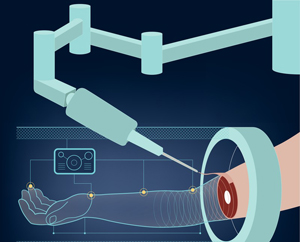Robotic surgeries are on the rise in the United States each year. Around 400,000 robotic surgeries were performed for diverse conditions in the year 2012, and there is an annual increase of 25% in the rate of these surgeries. But are these types of surgeries 100% safe? Apparently no, as statistics show. A recent study shows that out of 1.7 million robotic surgeries performed between January 2000 and December 2013, 8,061 device malfunctions, 1,391 injuries and 144 deaths were recorded in the United States. Injury/death due to a medical device could fall under product liability, medical malpractice or wrongful death. In all instances, medical record review would be an important process, and this makes medical record review for attorneys highly significant.
Robots entered the surgical suite in the 1980s. In a procedure that is assisted by a robot, the surgeon uses a robot to manipulate instruments, which allows the surgeon more precise control on actions such as incision and removal. Robots are said to reduce the fatigue and stress surgeons experience, especially during longer operations. Robots can assist in cancer operations, hysterectomies, and gall bladder removals among others. However, robot-assisted surgeries have a dark side as well, as is evident from the Da Vinci robot manufactured by Intuitive Surgical, Inc. Recent robotic surgery malpractice lawsuits related to this robot were filed by patients who sustained severe, life-threatening injuries.
One of the reasons attributed to these medical errors is the improper training provided for the surgeons. At present, there are no prescribed standards as regards how much training a surgeon needs to undergo before he/she is considered to be proficient at safely operating these robots. Experienced surgeons say that to be proficient at operating a Da Vinci surgical robot, surgeons may need to perform between 250 and 700 robotic surgeries on actual patients. This only means that surgeons across the nation may be using these robots without adequate training, resulting in serious injuries for patients. A major concern is that there may be surgeons operating these robots without any experience at all.
Now there is another robotic technology – Makoa robotic-arm assisted surgery – introduced to provide a completely personalized approach to hip and knee procedures and to help make the surgery as smooth as possible. This system is said to allow surgeons to perform more precise surgery in total hip, total knee and partial knee replacements. It is a tool that surgeons can use to help patients recover faster and have a better, longer-lasting replacement. In this procedure, the surgeon guides the robotic arm based on a personalized pre-operative plan, with computer assistance. With this, the surgeon can precisely remove damaged bone, and place the hip or knee implant with the highest level of accuracy. The ultimate goal is to provide relief to patients with the least risk or complications. The proponents of this new technology believe that it is bringing an innovative approach that could allow even more patients to get relief from their knee pain. It is expected that the Makoa technology will be used for other surgical procedures as well in the future.
There is not much high-quality data available to prove that robotic surgery is superior to traditional surgery. It is hoped that in appropriately trained hands, this type of innovative surgery should be safe. In fact, with a perfectly functioning surgical robot and a properly trained surgeon, these systems should be able to achieve their main objective namely simplifying the surgical procedure, make it less invasive and less painful, and ensure speedy recovery and positive outcome for the patient.




